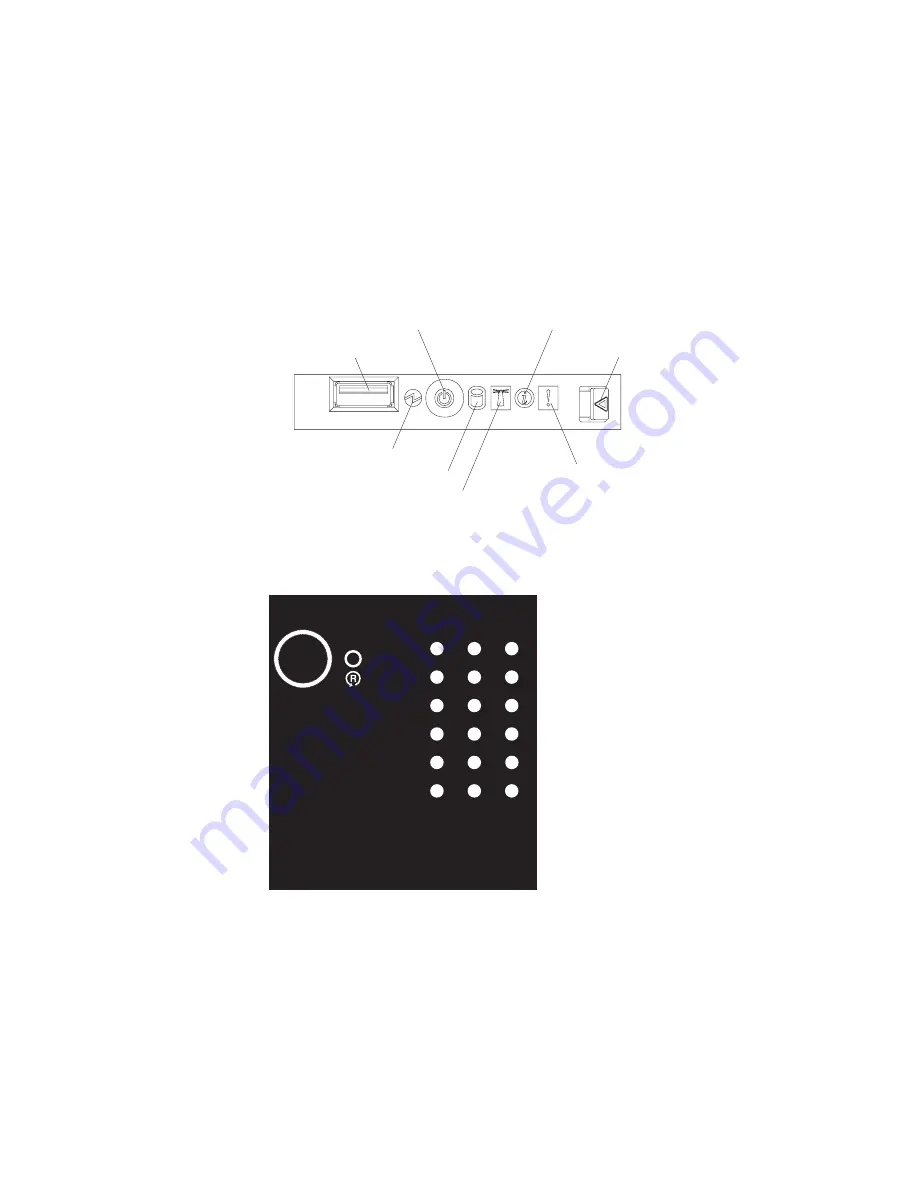
Before
working
inside
the
server
to
view
light
path
diagnostics
LEDs,
read
the
safety
information
that
begins
on
page
vii
and
“Handling
static-sensitive
devices”
on
page
100.
If
an
error
occurs,
view
the
light
path
diagnostics
LEDs
in
the
following
order:
1.
Check
the
operator
information
panel
on
the
front
of
the
server.
v
If
the
information
LED
is
lit,
it
indicates
that
information
about
a
suboptimal
condition
in
the
server
is
available
in
the
BMC
log
or
in
the
system-error
log.
v
If
the
system-error
LED
is
lit,
it
indicates
that
an
error
has
occurred;
go
to
step
2.
The
following
illustration
shows
the
operator
information
panel.
Power-control button
Power-on LED
USB connector
Hard disk drive activity LED
Information LED
System-error LED
Locator LED
Release latch
2.
To
view
the
light
path
diagnostics
panel,
press
the
release
latch
on
the
front
of
the
operator
information
panel
to
the
left;
then,
slide
it
forward.
This
reveals
the
light
path
diagnostics
panel.
Lit
LEDs
on
this
panel
indicate
the
type
of
error
that
has
occurred.
DASD
NMI
PCI
BRD
I/O
BRD
PS
NONRED
SP
LINK
RAID
MEM
CPU
CPU
BRD
FAN
PCI
VRM
OVER SPEC
TEMP
REMIND
LOG
Light Path
Diagnostics
Look
at
the
system
service
label
on
the
top
of
the
server,
which
gives
an
overview
of
internal
components
that
correspond
to
the
LEDs
on
the
light
path
diagnostics
panel.
This
information
and
the
information
in
“Light
path
diagnostic
LEDs”
on
page
52
can
often
provide
enough
information
to
correct
the
error.
3.
Remove
the
server
cover
and
look
inside
the
server
for
lit
LEDs.
Certain
components
inside
the
server
have
LEDs
that
will
be
lit
to
indicate
the
location
of
a
problem.
For
example,
a
VRM
error
will
light
the
LED
next
to
the
failing
VRM
on
the
microprocessor
tray.
The
following
illustration
shows
the
LEDs
and
connectors
on
the
microprocessor
tray.
50
IBM
xSeries
460
Type
8872
and
xSeries
MXE
460
Type
8874:
Problem
Determination
and
Service
Guide
















































